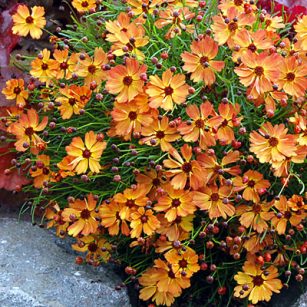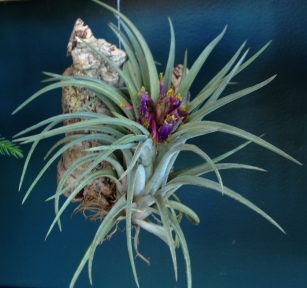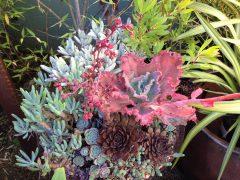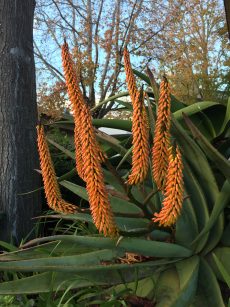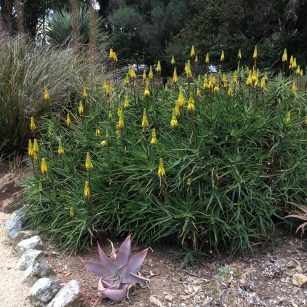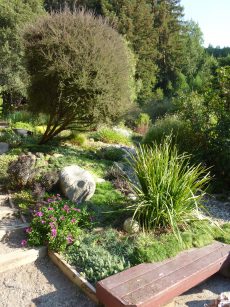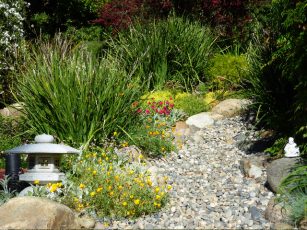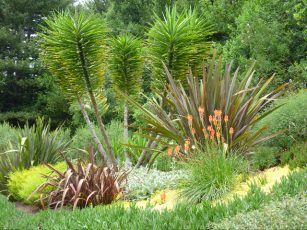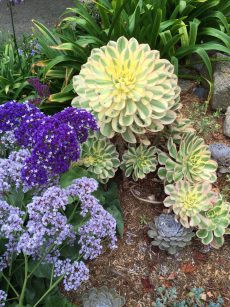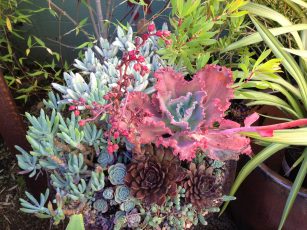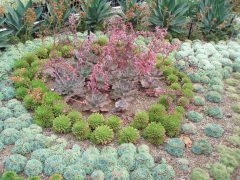
It may be a bit early but as I stroll through different stores I?m always thinking if something would make a good gift for someone on my Christmas list. Often I?m looking for easy-to-make gifts that I can put together at home and on a recent visit to Succulent Gardens near Elkhorn Slough I came up with lots of ideas.
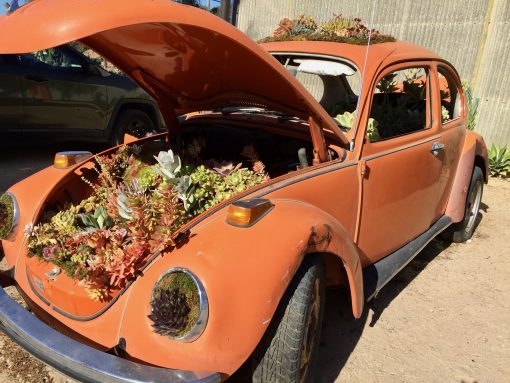
To be sure Succulent Gardens is jam packed with finished succulent wreaths, wood frames in all shapes filled with colorful succulents plus all the makings and starts to put together your own creation. They offer classes, too. But if you have succulents growing in your own garden and a grapevine wreath or any type of container that would make a great succulent garden you might want to try making one at home.
Grapevine wreaths come in all sizes. Using floral wire it?s easy to attach succulent cuttings, dried flowers or fresh, any type of greenery. moss or tillandsia. You don?t need to cover the whole wreath either making this type easy to create. After the holidays you can plant the succulent starts back in the garden.
If you?ve been thinking of including more succulents in your own landscape here are some tips for growing them in our area. The smaller varieties would make great wreath or planter specimens.
In choosing the best succulents for your garden think about if your area gets frost during the winter. Does it have protection from a building or evergreen tree or do you live in a banana belt that rarely freezes? Are you planting in sun, shade or a combination?
In addition to the hardy succulents like sedum and sempervivum many showy succulents need only a bit of protection during our winters. Aeonium decorum ?Sunburst? is one of the showiest species with spectacular variegated 10 inch rosettes. Sunburst is hardy to 28 degrees and looks terrific planted with black Voodoo aeonium which will take a light frost. Aeoniums do well in our climate as they come from Arabia, East Africa and the Canary Islands where winter rainfall is the norm.
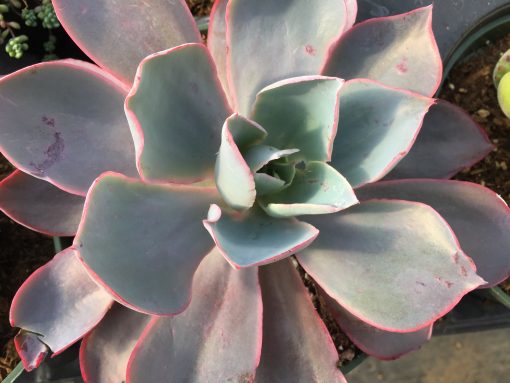
Echeveria grow naturally in higher elevations of central Mexico to northwestern South America and so also do well in our our cool wet winters. ?Afterglow? is frost tolerant and hardy to 27 degrees. It looks to be painted with florescent paint. There are spectacular hybrids being developed every year. These are not as hardy as the traditional hens and chicks but well worth the effort to find a place where they can survive a freeze. Frilly ?Mauna Loa? sports turquoise and burgundy foliage while Blue Curls echeveria looks like an anemone in a tide pool.
To ensure success when growing succulents, make sure your soil is fast draining. Our winter rains can rot even the toughest plants when their feet sit in soggy soil. Add sand, gravel or pumice to your soil or plant on mounds to increase drainage.
When potting succulents in containers, be sure to use a quality potting mix as good drainage is essential. There are special succulent mixes available but succulents are forgiving as long as the soil drains freely. Don’t add gravel or clay shards at the bottom if planting in a container as this impedes drainage. It work best to fill the entire pot with soil, top to bottom.
Because succulents use little water they are easy to care for. If you hate the idea of having to water after you get home from work, create the garden of your dreams with succulents.




